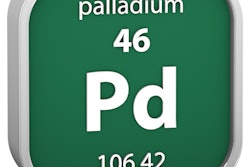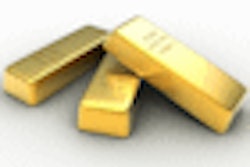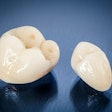
Gold occupies a place of honor in dentistry. Beyond the rich gleam of the precious metal, beyond its storied past, gold has properties that -- in many experts' opinions -- make it the ideal material for many restorations. That's why the patients who are still most likely to request gold are themselves dentists.
And that's why many dentists are frustrated that the spiraling price of gold is putting it out of reach. Dental gold -- which already sells for a higher price than gold on the commodities market -- has gone from around $704 per ounce last year to $975 per ounce in August. The price spike is forcing dentists and dental labs to find new solutions for those situations in which gold still seems to work best.
— Karl-Johan Söderholm, D.D.S., Ph.D.
Gold still shines in the following circumstances:
Brittle teeth opposing each other: "It is softer than the natural dentin and will wear better," said Steve Spoon, C.D.T., owner of Miracle Dental Lab of Houston. "Porcelain will cause cracks and fractures."
A large onlay: "When used as an onlay, the gold can protect cusps from future fractures better than any other material," said Karl-Johan Söderholm, D.D.S., Ph.D., a professor of materials science and engineering at the University of Florida.
A dark stump: Gold can cover the color better than lighter materials.
Heavy wear: "During wear, gold will retain a smooth surface, while tooth-colored restorative materials such as ceramics tend to become rough and accelerate wear of opposing teeth," Dr. Söderholm said. Gold can also withstand a grain of sand that might fracture ceramic.
Adjustments needed in the dental office: Because of its malleability, you can bend, burnish, and trim gold to exactly fit the margin.
Opposing an existing gold restoration: Porcelain or other harder materials could damage the gold when the patient bites down or grinds teeth.
What's the alternative?
The search for an alternative to gold goes back centuries. In ancient and medieval times, gold was virtually the only material that made serviceable restorations. Amalgams became popular in the late 1800s through the 1920s, but they were used for direct restorations rather than the indirect restorations in which gold was nearly always used.
"For indirect restorations it had really been the mainstay, and when the price of gold went up dramatically, it had a significant effect," said Stephen D. Campbell, D.D.S., M.M.Sc., a professor of restorative dentistry at the University of Illinois at Chicago.
Before the price of gold was deregulated in 1971, it hovered around $32 an ounce. By 1980, it had shot up over $800. "Dentistry had to find a way of dealing with it," Dr. Campbell said.
Dentists started using alloys that contained 50% gold, according to Dr. Campbell. One of the big innovations was the development of gold alloys covered with porcelain.
The price of gold dropped by the early 1990s, then began creeping up again. That led Alan B. Simon, D.D.S., of Scarsdale, NY, to stop using the yellow metal altogether. "I haven't used gold for 10 or 15 years," he said. Instead, Dr. Simon uses an alloy that contains semiprecious metals: 58% palladium, 30% silver, 2% zinc, 4% iridium, and 6% tin. The resulting crown or filling appears silver and wears as well as gold. He uses resins more frequently, however.
For crowns, porcelain fused to metal (PFM) -- using gold or another metal -- is now the most popular option. But all-ceramic crowns are catching on, too. The number of all-ceramic crowns Spoon sells has jumped from 10-15 per month in 2007 to 125-175 per month this year, he said. Cercon Zirconia crowns by Dentsply International are another popular option because the zirconia crown can be made with greater accuracy, according to Spoon. "While gold has to be waxed up and finished by a technician, Cercon is done by a computer," reducing human error, he said. "I'm glad to see that Cercon is becoming more popular than gold."
The prices of these options are similar. Spoon charges about $200 a piece for 50% gold crowns and PFMs that use gold. He asks $220 to $250 for zirconia crowns. A little more gold leads to a big hike in price; Spoon charges $730 this year for a 65% gold crown, up from $553 last year.
The real bargain are crowns from countries such as Mexico, China, and the Philippines that use metals far less expensive than gold. "You can now buy a crown from China for $29," Spoon noted. "Some dentists who are in PPOs will only charge $395 for a crown that uses nonprecious metals because that is all the insurance will pay." By comparison, many dentists charge $1,700 or more to place a 50% gold crown.
Nickel-chromium alloys can be used in many situations, according to J. Rodway Mackert Jr., D.M.D., Ph.D., a professor of oral rehabilitation at the Medical College of Georgia and a spokesman for the ADA. "They are quite inexpensive and offer a few other advantages, such as high strength and stiffness, as well as the ability to be etched and bonded to teeth with resin cements."
Not dead yet
Not everyone is ready to give up on gold. Theodore Hadgis, D.D.S., of Grosse Pointe Woods, MI, waxes and casts his own crowns so he doesn't have to pay the lab markups. "I'm still using gold in situations where you can't use anything else," he said. Those situations include "tight bites" in which occlusal space is limited, such as with extreme bruxers who have worn down their anatomy.
And some patients are still asking for gold as a kind of oral jewelry. "It's a social thing," Dr. Campbell said. "Some people like gold front teeth, and some like gold back teeth."
Spoon still budgets about the same dollar amount for the material, but buys fewer ounces. While most requests are for crowns that contain 50% gold, Spoon still gets five or six orders each year for "gold shell" crowns that contain 84% or 86% gold. The gold shell crowns are for patients who want the classic gold gleam or who are allergic to nylon-based materials used in partial dentures.
These days, most of Spoon's gold orders go not to crowns but to implant bars. "Screw-retained implant bars can cost [the dentist] $800 to $1500 just for the gold in the bar, and not including the labor required to make the bar," he said. However, titanium offers a good alternative because it is so strong and -- as gold has risen in price -- relatively affordable, Spoon said.
Mackert noted that gold use is on the wane for many reasons, not just the cost. "Patient demand for life-like, natural-appearing crowns has driven the rise in use of PFM and all-ceramic restorations," he said. "In addition, some people have acquired the notion that metals are somehow less 'natural' than ceramics or polymers."
Dental education trends may have contributed to gold's decline as well, Dr. Söderholm said. "Because of an expansion of basic science topics, most dental schools have been forced to decrease the time needed to teach gold technology. As a consequence, younger dentists just feel less confident when it comes to cutting the somewhat more complicated gold preparations."
Besides those patients who just like the flash, "those who nowadays prefer gold are usually dentists who have been trained to make and use gold onlays, and who have seen their superb performance," Dr. Söderholm said. "I think that fact is a testimony suggesting that gold restorations should always be considered, particularly when molar teeth are being restored."
Dental technicians still have a fondness for the metal as well. "I hope it's not a dying art," Spoon said. "My first choice for what I would want in my mouth would be a PFM with gold."



















